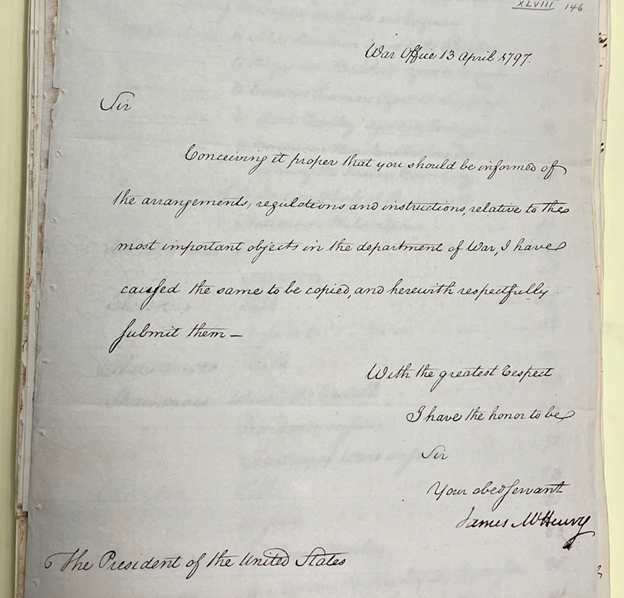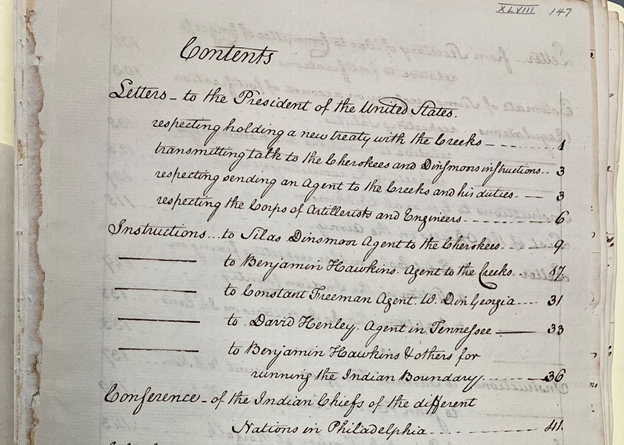By Rhonda Barlow, Research Associate
When John Adams became president of the United States, he inherited George Washington’s cabinet, including Secretary of War James McHenry. Adams has been criticized for not replacing immediately the inept McHenry with someone competent and loyal. But shortly after Adams took the oath of office, McHenry sent the new commander-in-chief a brief letter and a huge bundle of papers.

“Conceiving it proper that you should be informed of the arrangements, regulations and instructions, relative to the most important objects in the department of War, I have caused the same to be copied, and herewith respectfully submit them,” wrote McHenry.
On his own initiative, McHenry surveyed the holdings of his department, made judgments about what was most important, and despite the heavy workload he and his clerks faced, had copies made for John Adams.
To help the new president navigate over 150 pages of documents, McHenry included a 2-page table of contents, a handy overview listing the letters to former president George Washington; instructions and negotiations with Native Americans, including the Cherokees and the Creek Nation; information on fortifications; and regulations governing salutes. Because there was not yet a separate department for the navy, McHenry also included the status of the frigates that were being constructed at Philadelphia, Boston, and Baltimore, as well as that of one for the Dey of Algiers.

Although we do not have a letter John Adams wrote thanking McHenry for his industriousness, or commenting on these documents, we do know he received them, for they are part of the Adams Papers archive at the Massachusetts Historical Society. In fact, because of a disastrous fire in the offices of the War Department in 1800, McHenry’s initiative gives historians a treasure trove of what would have otherwise been destroyed. Perhaps historians should be asking, not why didn’t John Adams replace James McHenry in 1797, but why would he?
The upcoming volumes of The Papers of John Adams are an exciting opportunity for a fresh look at the Adams Presidency.

